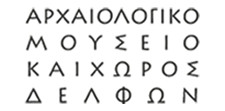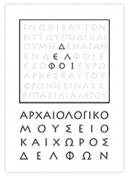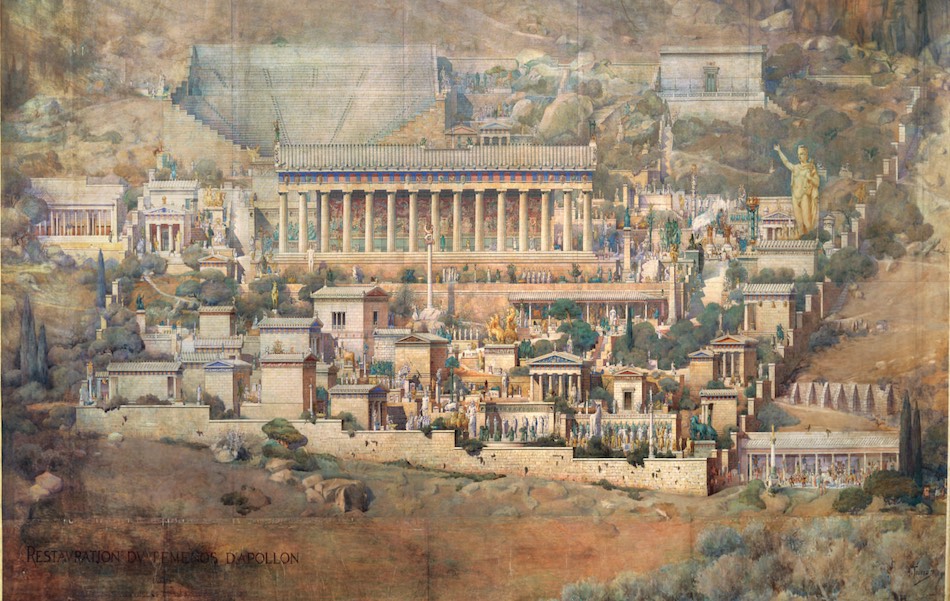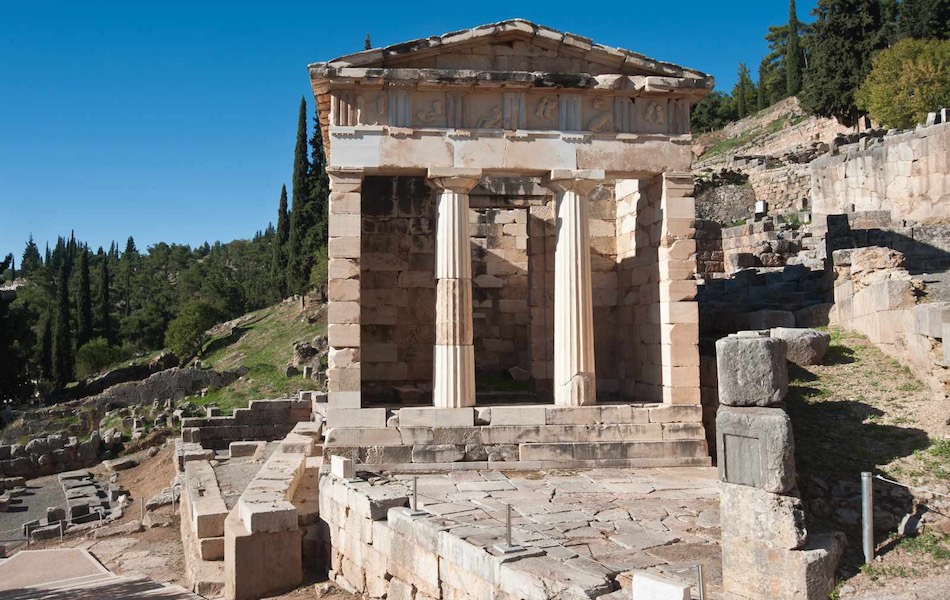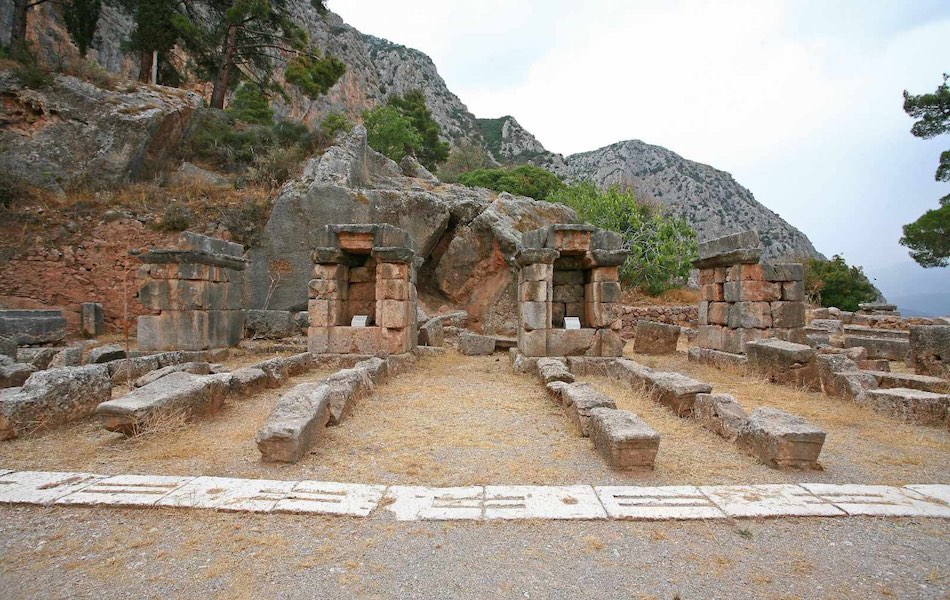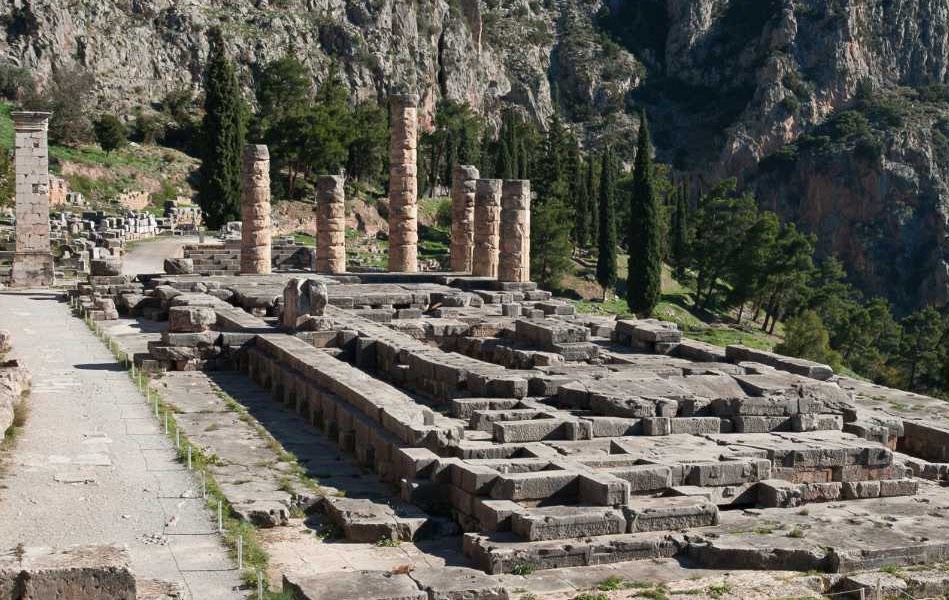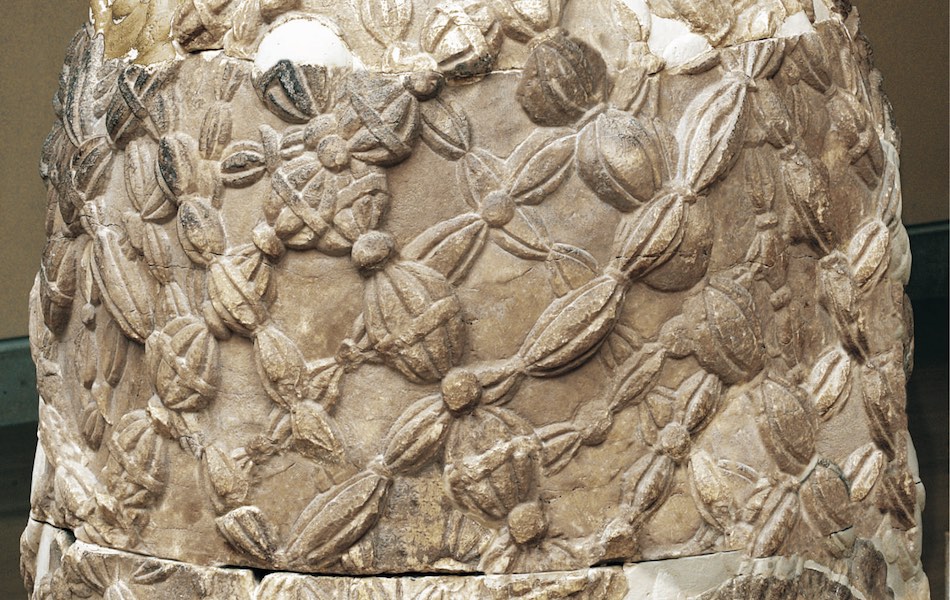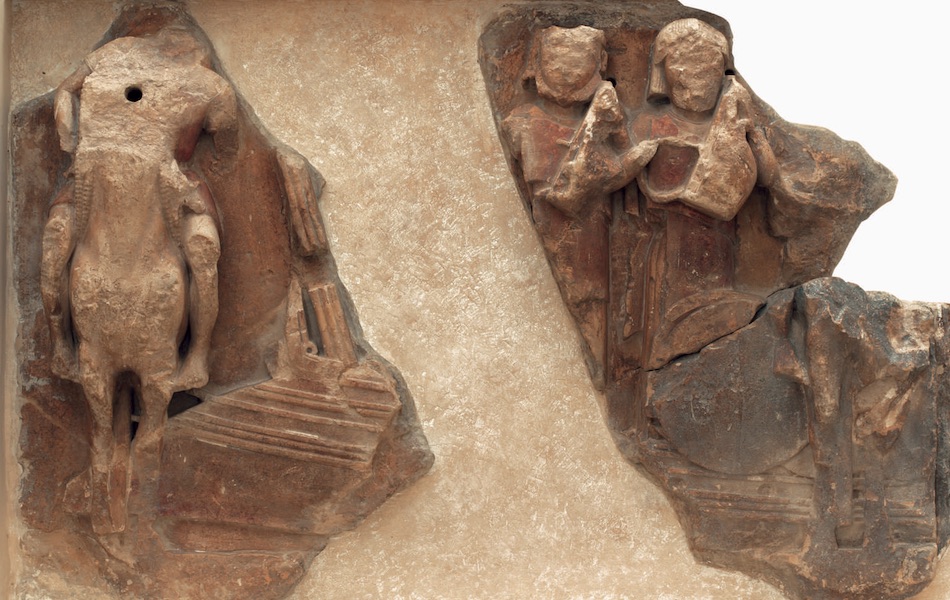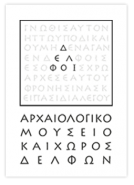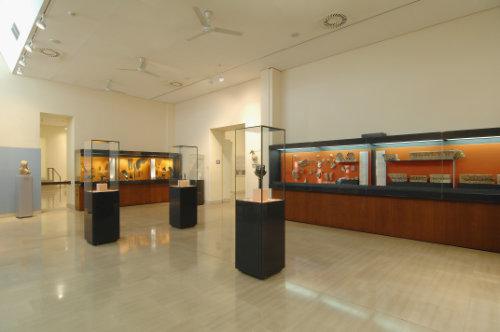

In addition to the official dedications by cities and rulers, a large number of anonymous pilgrims dedicated offerings to Apollo. Among them, some small bronze votives recovered in the Sacred Way deposit, dating back to the first half of the 5th century BC, involve the following: A bronze incense burner in which a young female […]
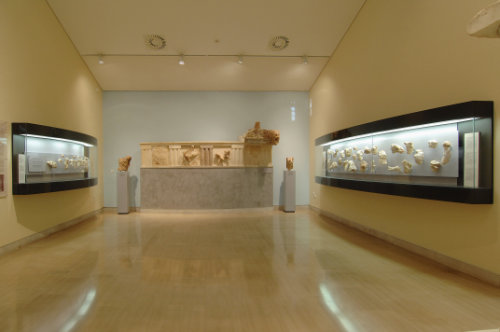
In this hall are exhibited the architectural sculptures from the Tholos of Delphi, a building of unique elegance, circular in plan, dating back to the 4th century BC. The Tholos dominated the sanctuary of Athena Pronaia and today arouses the interest of visitors due to its unusual shape, but also because it has been partly […]

In this hall are displayed the most emblematic works of Delphi dating from the 4th and the 3rd century BC that attest to the major significance of the oracle during that period. The marble acanthus column is topped with three young female dancers. They are dressed in short diaphanous chiton with thin folds, revealing fluidly […]
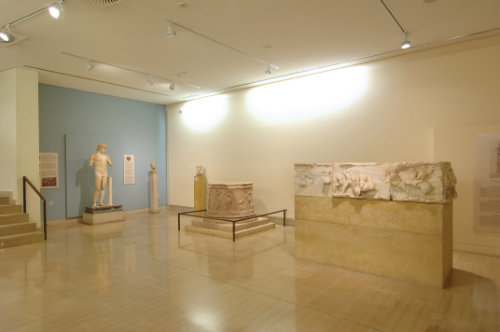
Already since the early years of the Roman rule, the sanctuary of Delphi had lost its political power; as a result, its revenue and the number of important votives decreased. In the maelstrom of warfare, the site was deprived of its treasures which were transferred to Rome. However, despite the sanctuary’s decline, some Roman emperors […]
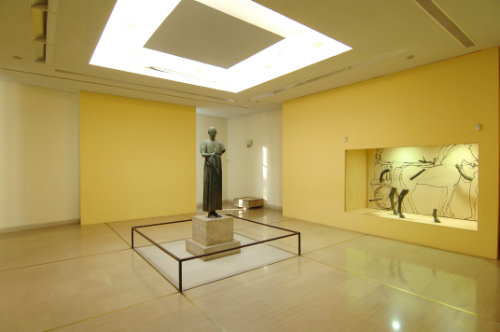
Timeless symbol of Delphi, the Charioteer, is a work of the 5th century BC (480–470 BC) made of bronze, displayed in the last hall of the Museum alongside the fragments of the chariot his drove. The statue was originally mounted in the archaeological site commemorating the victory of the tyrant of Sicily Polyzalos in the […]
The architectural remains of the city Panormos (Ano Kisseli) are located on the slopes of Mt. Agios Ilias. Researchers identify the city with the
Scholars identify Haleion, the ancient city of western Locris, with modern Galaxeidi. The area has been inhabited since the prehistoric period, with important
Parnassus is one of the largest mountainous regions of Mainland Greece and one of the highest Greek mountains. It
The present-day settlement of Agia Euthymia (St. Euthymia) is identified by most scholars with the city Myonia or Myania of the Ozolian
On a strategic location above the present-day settlement Glyfada or Glyfa (just opposite the islet Trizonia), on a hill called Palaeokastron, is located
